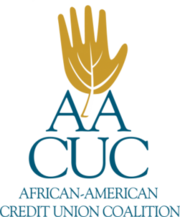“Hurry up and wait” is a phrase many U.S. military members are familiar with. It is the notion to expeditiously complete a specific task or be at a specific location only to stop and wait because other pre-requisites have not been completed. So, “hurry up, but wait to move forward.”
Hurrying to do something is not my style. I much prefer planning and executing – and even pivoting when needed – and leave hurrying as a last alternative. Even though I say this, the other day I found myself hurrying while washing my hands. If I sang “The Alphabet Song” any faster, you would have thought our 26-letter English alphabet was shortened to just ten recognizable letters.
That made me wonder, what else am I hurrying through, and what “old habits” – specifically pre-pandemic habits – am I hurrying back to?
While COVID may not be an absolute thing of the past, we continue to see it in our rearview mirror as a consideration for living our daily lives instead of a directive for how to go about our daily business. Besides teaching – or reminding some of us – that washing your hands the right way requires doing so for at least 20 seconds (hence singing “The Alphabet Song”), the pandemic provided a plethora of lessons learned, particularly with how we showed up in the workplace and conducted business.
I would summarize these lessons as inspecting, connecting and expecting.
Inspecting. As an agile professional having had the opportunity to work with software development scrum teams, you learn that “inspecting and adapting” is par for the course. As part of the scrum process, the team worked in two-week sprints, or units of time, where there was one agreed upon goal, and the full team did their individual and collective parts to deliver valuable working software at the end of the sprint. Inspecting took place on the last day of the sprint in a session called a “retrospective.” Inspecting required intentionally setting aside time to be still and to reflect on what went well, want went wrong and what could go better within the next two weeks.
During the pandemic, many of us found ourselves being introspective – what impact am I having, how am I being valued, what is most important, for example. At an enterprise level, organizations were forced to be reflective as well, asking and listening to the needs of employees and identifying the best service delivery methods to drive business outcomes without driving away employees and members.
Connecting. Let’s be real. The pandemic and virtual work did not keep us from connecting with each other. Instead, it changed how and more importantly why we connected. Checking in on one another and finding out “How are you?” – not “How are you doing?” or “How are you feeling?” but truly “How are you?” Again, we had to be intentional with showing our humanity at work, which often looked like unscheduled video calls or group texts. We did not have the luxury of a drive-by-cubicle or water cooler moment. As we all navigated through the collective trauma of the pandemic, social unrest and economic and political strife, the stakes were too high if we did not connect.
Organization leaders and executives turned to video messages, mass phone messages, blog posts, listening sessions, and a wide-array of creative solutions to offer their voice, ear or shoulder to lean on and connect with staff, members and each other.
Expecting. It appeared every day during the pandemic we learned something new or had to do something differently. I remember waking up thinking, “What will science, experts and our leaders tell us today?” In other words, I expected change. I expected uncertainty and needing to be comfortable with working in the gray area -- you know, that space between reality and perception based on what we know today and what we assume about tomorrow. Anticipating change made it easier to deal with, operationalize and even exploit change so that change became the catalyst for an opportunity rather than an inconvenience.
Organizations that took expectation to heart survived by pivoting, attempting, innovating, even failing, but ultimately fortifying their resilience. Some solutions were merely temporary, while others became permanent fixtures in the way the organization served its constituents to reflect our ever-evolving world.
Are you or your organization hurrying back to old ways and waiting to see the same results and outcomes? If so, you may be waiting much longer than you would like. No matter how we attempt to do things as we did prior to the COVID-19 pandemic, the reality is you are not the same, your organization is not the same, your employees are not the same, the world is not the same.
Before rushing back to the old, I implore you to inspect (what ways of working and showing up in the workplace are worth continuing?), to connect (when was the last time you checked in on someone without an expectation of a project status update?) and expect (new changes, new ways of doing things and new outcomes). Take the best of what was and adapt it to what is and what it could be. By doing so, personal and organizational success may likely follow.








